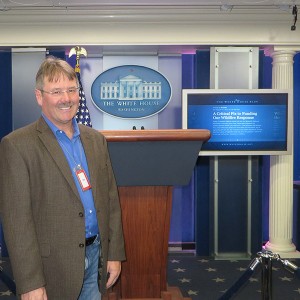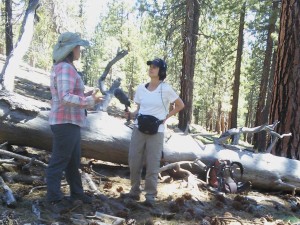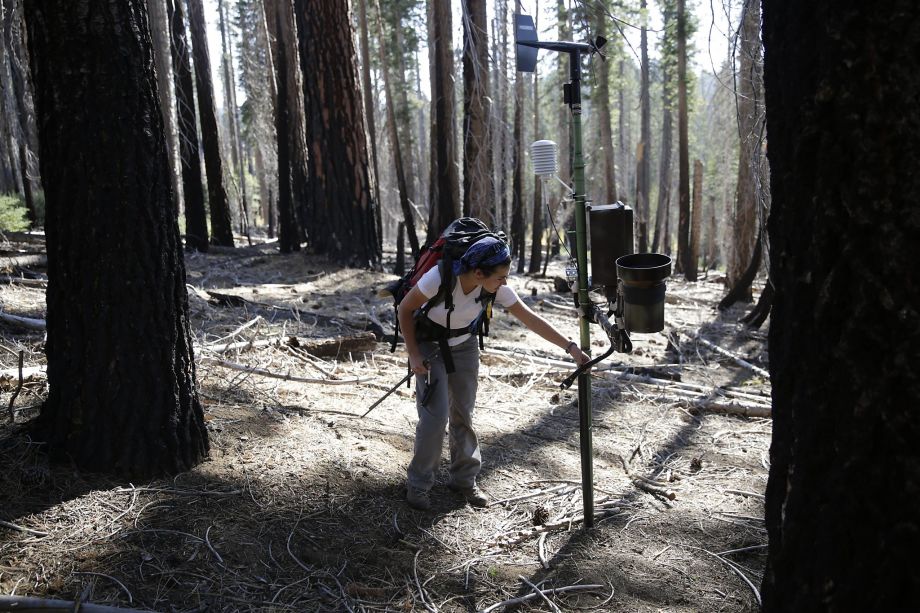The New York Times article “Fighting Fire with Fire “ discusses the importance of prescribed fire in managing fire risk. Relying on quotes from Scott Stephens, the Times also reports why other strategies beyond prescribed fire are necessary in Southern California. The article is part of the special feature “California Today.”
Author: kristin
Stephens lab research makes it to front page of SF Chronicle
Stephens lab research into hydrological effects of wildfire was featured on the front page of the San Francisco Chronicle.
Gabrielle Boisrame conducts research in Yosemite’s Illilouette Basin.
Prof. Stephens speaks at White House roundtable
Prof. Scott Stephens was invited to the White House for a discussion of climate change impacts on fire in the wildland/urban interface. With fire chiefs, international scientists, FEMA Administrator Craig Fugate, and Vice President Joe Biden, Scott discussed emerging threats and possible solutions for communities in high-risk fire areas.
More information can be found here.

Fire Outreach in the News!
Stephens Lab members taught an all-day workshop to 120 local students at Hopland Research and Extension Center near Ukiah, California. The Ukiah Daily Journal put us in the paper! Check out the article here.
Where Fire Works
Listen to graduate student Kate Wilkin Thursday October 2nd on NPR affiliate Capital Public Radio at (Morning Edition at 630 and 830 AM, All Things Considered at 430 PM) as part of a five part series on Fire in California. Check out the multimedia series or read about Kate’s adventure with an NPR reporter.

Kate Wilkin guided Capital Public Radio reporter, Amy Quinton, through Yosemite National Park’s Illilouette Basin to discuss “where fire works” in California. They explored an area where lightning strike fires have been allowed to burn since the 1970s resulting in a restored forest with a rich fire history. The rich fire history demonstrates that once fires are allowed to burn, they are self-limiting. The fires start to fit together like a jig saw puzzle. The past fire prevents a future fire. After a decade or more, past fires no longer limit the extent of other fires, but they often moderate fire severity, or how many trees are killed. The restored forest has quilt-like patches of unique communities and range from open park like forests to shrub lands, dense baby trees, and wetlands all with diverse plants and animals on the forest floor. Learn more at http://www.cafiresci.org/blog/.
Fire at Cal Day
Kate Wilkin and Anu Kramer, joined by Stella Cousins from the Battles lab and Sibyl Diver from the Carlson lab, hosted numerous Native American students, family members, and community supporters during Cal Day 2014. Four interactive sessions focused on combustion and fire behavior (with the fire vortex), prescribed fire (with a dress-up station), and methods of studying fire, including dendrochronology (with real fire scars)! Read more here.

